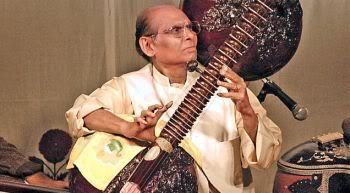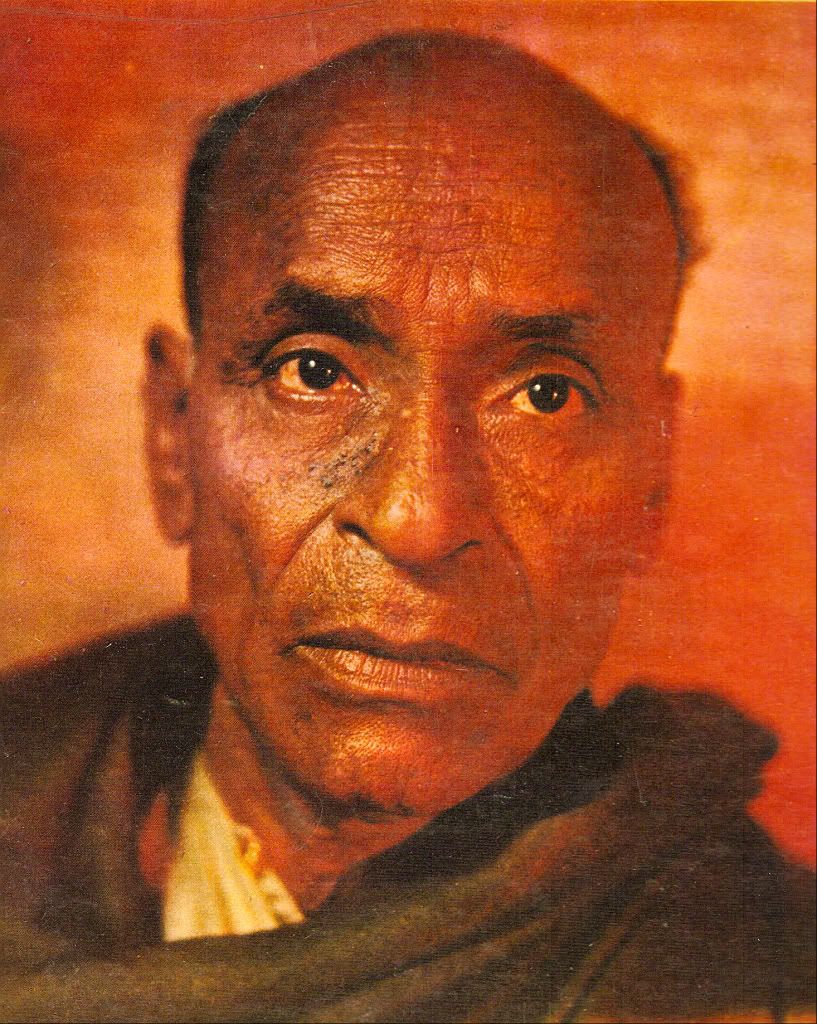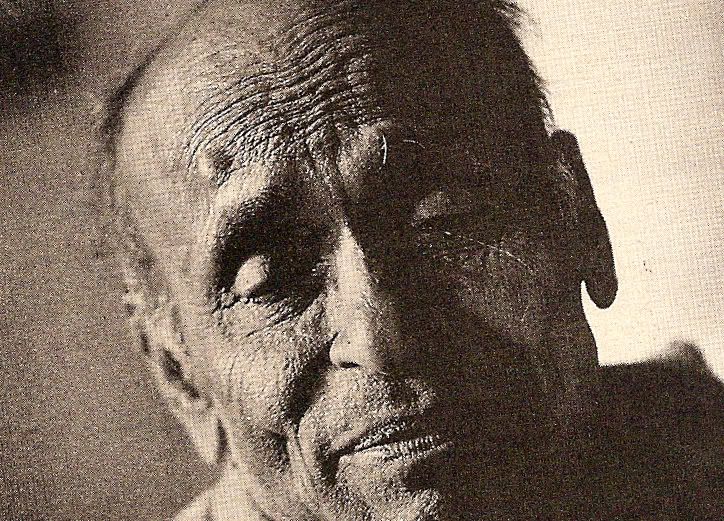India Indian music music: musical oddity near genius syncretism
by Warren
7 comments
Meta
SiteMeter
Brighter Planet
78 rpm Records of Indian Music: The Dacca Orchestral Party
This enchanting ensemble is a mix of Indian and Western instruments with occasional vocals. Googling the name “Dacca Orchestral Party” yields nothing. I wonder: would you have heard this group playing in the lobby of a Grand Hotel in the 1920s?
Wonderful. Surely one of the earliest pieces of East-West Fusion in existence.
Raga Kafi:
The little vocal interlude is priceless.
=========================================
Raga Bhairavi:
The string/percussion section at 2:38 is timbrally fascinating. I could never have imagined such a combination; it almost recalls some of Harry Partch’s orchestrations.
India Indian music music: genius violin
by Warren
leave a comment
Meta
SiteMeter
Brighter Planet
78 rpm Records of Indian Music: Pandit V.G. Jog, with Ustad Ahmed Jan Thirakwa
Two early recordings of the late Pt. V.G. Jog, one of the musicians who made Hindustani violin a force to be reckoned with in the 20th century.
Pandit Vishnu Govind Jog, better known as V. G. Jog (22 Fehruary 1922 – 31 January 2004), was an Indian violinist. He was the foremost exponent of the violin in the Hindustani music tradition in the 20th century, and is credited for introducing this instrument into Hindustani music.
Jog was a disciple of Baba Allauddin Khan. He performed and recorded with many of the greatest Hindustani musicians of the 20th century (including Bismillah Khan) and toured the world. He frequently performed for All India Radio’s Calcutta division. He received the Padma Bhushan award in 1982.Wiki
He is accompanied by one of the greatest exponents of tabla ever known in India, the late Ustad Ahmedjan Thirakwa:
Ahmed Jan Thirakwa Khan was an Indian tabla player, commonly considered the preeminent soloist among tabla players of the 20th century, and among the most influential percussionists in the history of Indian classical music. He was known for his mastery of the fingering techniques and aesthetic values of various tabla styles, technical virtuosity, formidable stage presence, and soulful musicality. While he had command over the traditional tabla repertoire of various gharanas, he was also distinguished by the way in which he brought together these diverse compositions, his reinterpretation of traditional methods of improvisation, and his own compositions. His solo recitals were of the first to elevate the art of playing tabla solo to an art in its own right in the popular mind. His style of playing influenced many generations of tabla players.
A meeting of the titans, indeed. Enjoy these two performances, probably from the early 1950s.
This version of Raga Bahar is based around the popular chiz Phulwaale kaunt main ka basaunt, recorded in the 1920s by Narayanrao Vyas.
Raga Nat Bihag; inevitably, this is an adaptation of the canonical chiz Jhan jhan jhan payal baaje, sung by pretty damn near everybody who’s ever performed this raag.
Thirakwa is rock-solid and authoritative throughout these performances.
India Indian music music vocalists: genius khyal
by Warren
3 comments
Meta
SiteMeter
Brighter Planet
More Early Mallikarjun Mansur To Delight Your Ears
Three more gems from Buwa’s Gwalior period, for your enjoyment:
“Karnataka Kafi”
==========================================
Raga Puriya
==========================================
Raga Brindabani Sarang
India Indian music music: genius Hindustani instrumentalists Raga
by Warren
leave a comment
Meta
SiteMeter
Brighter Planet
78 rpm Records of Indian Music: Abdul Aziz Khan
I’m gradually getting more of my collection of Hindustani 78 rpm records digitized and uploaded.
Here are two performances by the vichitra veena player Abdul Aziz Khan, of the ragas Darbari Kanada and Bageshri.
On both recordings the Ustad can be heard giving himself daad when he plays something nice. It’s a fascinating look at the artist’s mind in its relation to the listeners; he needed to have rasikas enjoying his music for it to have any meaning — and since it was just him and the tabla player in the room, he provided his own feedback as needed.
More to come. I have hundreds of these recordings and I plan on getting them all uploaded in the next year or so.
Indian music music vocalists: genius khyal
by Warren
3 comments
Meta
SiteMeter
Brighter Planet
Faiyaaz Khan: Aftaab-e-Mausiqi
Raga Darbari Kanada
==========================================
Ustad Faiyaz Khan is so far the best known exponent of Agra Gharana in Hindustani classical music. He was the master khayal vocalist of his time. Born at Sikandara near Agra in 1886 (contested as 1888, 1889)[1], he was the son of Shabr Hussain, who died three months before his birth. He was brought up by his maternal grandfather, Ghulam Abbas (1825?-1934), who taught him music, up to the age of 25. He was also a student of Ustad Mehboob Khan Darspiya, his father-in-law and was a for short time a disciple of Ustad Jagadguru Mallick of Calcutta who had the famous sarodiya Ustad Hafiz Ali Khan and the renowned sitarist Ustad Enayet Khan in his tutelege.
WIKI
An extraordinary performance of Raga Desh.
==========================================
The vocalist and historian Susheela Misra writes:
Faiyaz Khan’s musical lineage goes back to Tansen himself. His family is traced back to Alakhdas, Malukdas and then to Haji Sujan Khan (son of Alakhdas who became a Muslim.) Genius, musical ancestary, and training combined to give us this wonderful artist-one of the most reputed and respected exponents of Hindustani classical music in recent times. He had the exceptional good fortune of receiving his talim in Dhrupad singing from his grand father, Ghulam Abbas Khan; and in Dhamar from his grand uncle, Ustad Kallan Khan, both of whom were leading musicians of the rangila gharana in the second half of the last century. Kallan Khan was the younger brother of Ghulam Abbas Khan and, therefore, the grand-uncle of Faiyaz Khan Sahib. Ghulam Abbas Khan was his maternal grandfather, and Rangeela Ramzan Khan his paternal great grandfather. Faiyaz Khan’s uncle, Fida Hussain was a court musician in Tonk (Rajputana). Faiyaz was born at Sikandra near Agra in 1880 and he died in Baroda on 5th November 1950. As his father Safdar Hussain died very early, his grandfather adopted him and brought him up as his own son. Ghulam Abbas Khan, the son of the great Ghagge Khuda Bux and an intimate friend of Bairam Khan, not only imparted to the boy the authentic taleem of his gharana, but also took the promising young Faiyaz on a “pilgrimage of music”, visiting all the important centres of music, listening to great contemporary musicians, and bringing him practical experience in concert singing. By the time he was 18, Faiyaz Khan had become such a “polished” artist that he began to give recitals in places like Bombay, Calcutta and Gwalior. Once at Bombay, 24 year-old Faiyaz got a chance to hear the great Miyanjan Khan, a pupil of the great Fateh Ali Khan of Patiala. Immediately after him, Faiyaz was asked to sing. At first he copied Miyanjan Khan’s Multani in the latter’s style and then he demonstrated in his own style-both in such a masterly way that Miyanjan Khan embraced the young singer and exclaimed in genuine appreciation: “Tum hi ustad ho” (you are a true descendant of the masters of the art.) It was an age of gentlemen-musicians. Link
==========================================
The canonical chiz in Raga Chhayanat, Jhanana jhanana.
==========================================
While people used to admire his flawless diction in Urdu, Hindi, etc, they used to be amazed at his graceful and fine pronunciation of Braj-Bhasha in which a large number of Khayals, Dhamars, etc, are couched. This was because Faiyaz Khan spent his early years in the Braj-Bhasha areas like Mathura, Agra, Atrauli, etc. His father-in-law, Mahboob Khan of Atrauli, was none other than the reputed composer Daras Piya whose khayals in ragas like. Jog, Anandi, etc, are still so popular. Another relation–Suras Piya- was a wellknown composer who lived a recluse’s life in Mathura.
The song Man Mohan Brij ko Rasiya (in Paraj) which Faiyaz Khan has made famous, is a sample of Saras Piya’s compositions. Faiyaz Khan himself composed many songs under the penname Prem Piya.
In his youthful “halcyon days” Faiyaz Khan sat in the company of great artists like Moizzuddin, Bhaiya Ganapatrao and Malkajan. That was how he had imbibed the romantic Thumri style and could render Dadras and Ghazals so imaginatively. Many a time I have witnessed Faiyaz Khan rendering the Bhairavi Thumri “Babul Mora” and drawing tears out of the listeners’ eyes. Faiyaz Khan used to say that Malkajan’s Bhairavi-Thumris were peerless. And Malka even in her obscure later years never missed the Ustad’s concerts in Calcutta. Unlike some highbrow musicians, Faiyaz Khan never looked down on light classical types of songs. He used to say:- “It is not a child’s play to sing a Thumri or a Ghazal. The essence is the bol-but one has to be very imaginative and original.” Even into a simple Dadra he could pour a lot of genuine emotion. Link
==========================================
Another “Payal baaje” bandish, this time the classic in Nat Bihag.
==========================================
Ramkali: Un sanga laagi ankhiyan. His layakari is very enjoyable.
Ustad Faiyaz Khan would render a full scale ‘Nom-Tom’ alap and follow it up with khayal compositions, thus blending dhrupad and khayal and giving his gayaki more flexibility. His bol-banawo, bant, layakari, and his inimitable style of reaching the sam are unmatched even today. He was a great composer himself, his pen name being #145;Prempiya’. His compositions in raga Jaijaiwanti, Jog etc. are treasured by Agra singers to this day. In fact, Faiyaz Khan’s Agra gayaki became so famous that most of his students and followers would actually copy him to the very last detail, imitating even his voice.
Baju band khul khul jaaye in Raga Bhairavi. One of the pivotal renderings of a timeless classic. Enjoy his layakari and occasional tappa-ang taans in the laggi section.
Another Bhairavi, Banao batiyaan. This wonderful dadra performance is packed with emotion. Note his heartfelt pukaras as he approaches the top Shadja; nobody can evoke emotion like this anymore, alas. Also notice his inclusion of vernacular, “speechy” utterances like “Aare haan” (“Oh, yeah!”) in the course of his rendering, rather like a contemporary bluesman.
Education India Indian music music Personal: aesthetics Education genius India Indian music music obituary
by Warren
2 comments
Meta
SiteMeter
Brighter Planet
A Great Tree Has Fallen: Asad Ali Khan, R.I.P.
This Tuesday, June 14, the world of music lost a great spirit.
Ustad Asad Ali Khan, one of the few remaining performers on the ancient Indian stringed instrument called the Rudra Veena, passed away after suffering a heart attack in the early hours of the morning.

He performed an austere and sober style of music, an instrumental version of the vocal style known as Dhrupad, which dates back to the 11th century or so. The Rudra Veena, or Been, is considered to be one of the oldest instruments of Indian tradition; it has its own origin myth, which states that the instrument sprang full-blown from the forehead of a meditating Lord Shiva. It is interesting that Asad Ali Khan, whose name makes his Muslim ancestry evident, saw no religious conflict in embracing this story; ecumenicism in Indian musical traditions is alive and well.
India Indian music music vocalists: genius khyal
by Warren
2 comments
Meta
SiteMeter
Brighter Planet
Mallikarjunbua Before Jaipur-Atrauli Training
Here are some more of the 78 prm discs from Mallikarjun Mansur’s early period, when he was still singing Gwalior gayaki. These recordings are utterly delightful.
Gaud Malhar:
Jaunpuri:
Kafi:
Adana:
April 22 Action environment India Indian music music
by Warren
2 comments
Meta
SiteMeter
Brighter Planet
Tara Bangalore’s Set, 04/22/2011
Here is the complete set by Carnatic violin virtuoso Tara Bangalore at the “World Violins Against Climate Change” concert in Boston on April 22. Her artistry is prodigious, and her rapport with her disciple Rasika Murali is absolutely delightful.
Personnel:
Tara Bangalore and Rasika Murali – violins;
Pravin Sitaram – mridangam;
Tarun Bangalore – kanjira and mridangam.
Listen and enjoy — and if you do, please consider donating to 350.org through this link.
Composition: “Abishta varada”
Ragam: Hamsadhwani
Adi talam- 8 beats
Composer: Tyagaraja
——————————————
“Sobhillu”
Ragam: Jaganmohini
Rupakam — 6 beats
Composed by Tyagaraja
——————————————
“Aparadhamula”
Ragam: Latangi
Adi talam
Composed by Patnam Subramania Iyer
——————————————
Thani Avartanam (Percussion Solo)
——————————————
“Tom Dru Dru Dim”
Ragam: Misra Shivaranjani
Double beat – 16 beats Adi talam
Composed by: Maharajapuram Santhanam.
——————————————
Indian music Jazz music Personal: concerts
by Warren
leave a comment
Meta
SiteMeter
Brighter Planet
Brief Update…
…”Violins Against Climate Change” was a spectacular success. We sold out the hall (actually running out of chairs!) and raised a whole buncha money for 350.org. I will be posting videos and photos this week.
India Indian music music vocalists: genius Jaipur Gharana khyal
by Warren
9 comments
Meta
SiteMeter
Brighter Planet
Singing Is Nothing But Joy: An Appreciation of Mallikarjun Mansur

The first time I heard the music of Pandit Mallikarjun Mansur was in 1978, very early in my study of Hindustani music. I’d taken a survey course on Indian music at the Harvard Extension, and the professor gave me an assortment of vocal music that included Mansur’s rendition of a beautiful rainy-season raga, Gaud Malhar.
It was strikingly different from the other music on the tape. More than any of the other singers represented, this vocalist really seemed to be enjoying himself. There was a rhythmic playfulness that spoke to my jazz-loving self, integrated with the serene aesthetic flow that characterizes Hindustani music. His voice was a high, slightly raspy tenor; his range was relatively narrow; his breath control preternatural.
I asked other people about Mansur. This was the late 1970s, and most of the people I knew in the Indian music community had never heard of him; as it turns out, he had not been performing widely for decades and had only recently returned to the notice of the concertgoing public in India. Over the next few years I gradually acquired tape recordings of his LP records, whetting my appetite for more of this remarkable singer’s remarkable music. Nobody I knew on the Indian tape-trading network had any concert recordings, and the Internets hadn’t been invented yet.

